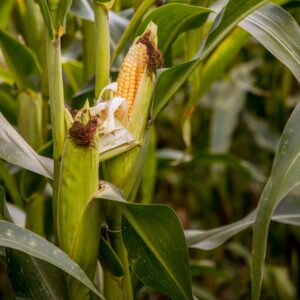
Sunflower seed is primarily used for manufacturing sunflower oil and oilcake (what is left after the oil has been extracted). After the hull is removed the seed can be consumed or used for different oil production. Most of the seed produced is marketed locally to expressers, animal feed and for seed.
The greatest importance of sunflower production is the extraction of oil from the seed. Sunflower oil is used on a daily basis in households, restaurants and various food industries. Sunflower is the basic raw material for the preparation of margarine and spreads, used daily by millions of people. Sunflower oil can also be converted to diesel for use in diesel engines as biofuel.
The sunflower seed also produces oilcake, which is widely used for animal feeds (as sunflower oilcake meal) because of its high protein content. Sunflower “whole seed” (fruit) is sold as a snack food, after roasting in ovens, with or without salt added. Sunflowers can be used to make a peanut butter alternative, sunbutter. It can also be mixed with rye flour to make bread (in Germany this is called Sonnenblumenkernbrot – literally: sunflower whole seed bread). It is also sold as food for birds and can be used directly in cooking and salads.
Sunflowers also produce latex and are the subject of experiments to improve their suitability as an alternative crop for producing hypoallergenic rubber.
Source: A Profile of the South African Sunflower Market Value Chain (see "Websites & publications" heading); http://en.wikipedia.org/wiki/Sunflower
Further reference:
See the monthly bulletins and Sunflower & Soybean Forum presentations on the South African Grain Information Service (SAGIS) website for updated information. Check also whether the publishing of the annual Sunflower Seed Market Value Chain Profile, which included an analysis of sunflower imports and exports, has resumed. These could be found on the Directorate Marketing pages on www.dalrrd.gov.za, website of the Department of Agriculture, Land Reform and Rural Development (DALRRD).

Find the Grading Regulations for sunflower and requirements for grain exports at http://agbizgrain.co.za.
The Free State (56%) and North West Province (28%) are the major producers of sunflower seed, followed by Limpopo (13.5%) (DALRRD, 2023). The area planted with sunflower generally increases in drought-affected seasons owing to sunflower performing better in dry conditions and having a late planting window relative to maize.
Sales of sunflower seed are mostly to the domestic market with very little quantities destined for the export market. This can be due to the fact that our processing capacity in the country is big enough to accommodate most of sunflower seed produced locally.
Grain farmers switch from sunflower to maize easily, many planting both as a way of diversifying their farming operations. Advantages of the crop include being able to grow on marginal soils with little fertiliser, being a consistent crop under unfavourable weather conditions, and that historically, it could be planted “as a last resort”. Negatives include Sclerotina, falling over problems, bird damage but also that under ideal conditions, sunflower does not provide the same returns as crops like maize and soybeans.
There are five main levels that can be identified in the sunflower seed-to-sunflower oil value chain:
No statutory levies are applicable and the marketing of oilseeds is free from government intervention. The sunflower marketing season in South Africa commences on 1 March.
Further reference:
Source: A Profile of the South African Sunflower Market Value Chain; Abstract of Agricultural Statistics 2023; BFAP study for GrainSA in 2015 – see www.grainsa.co.za/the-future-of-sunflower-production-in-south-africa
Find Sunflower production … a concise guide at www.dalrrd.gov.za. Other grower guides are listed under “Websites & publications“.
Find information about Department of Agriculture, Land Reform and Rural Development (DALRRD) at www.dalrrd.gov.za.
Further reference:
Visit the websites listed and already mentioned on this page.